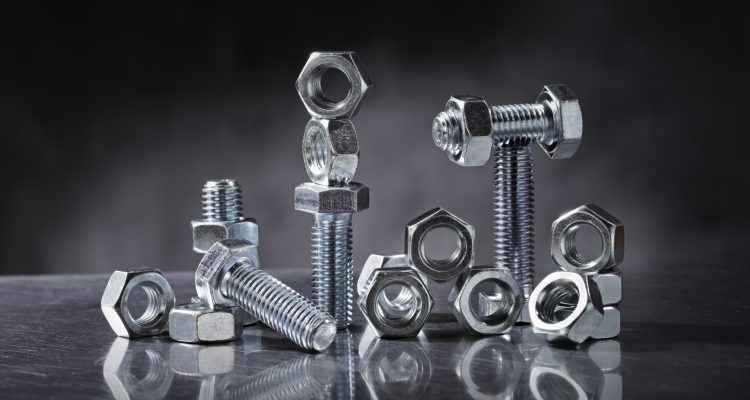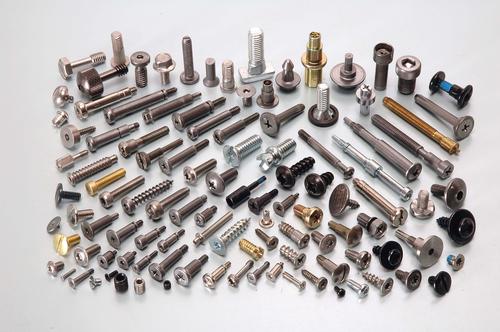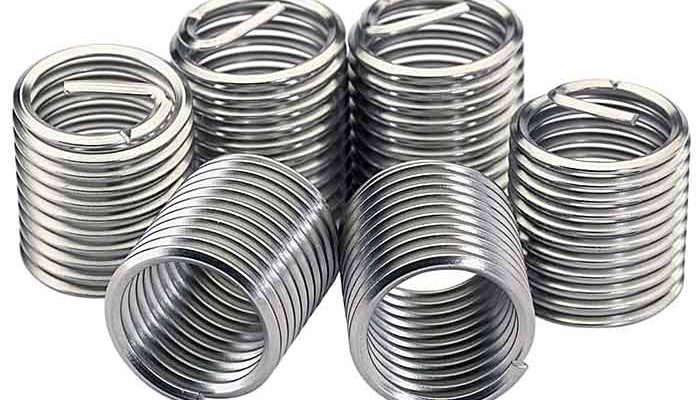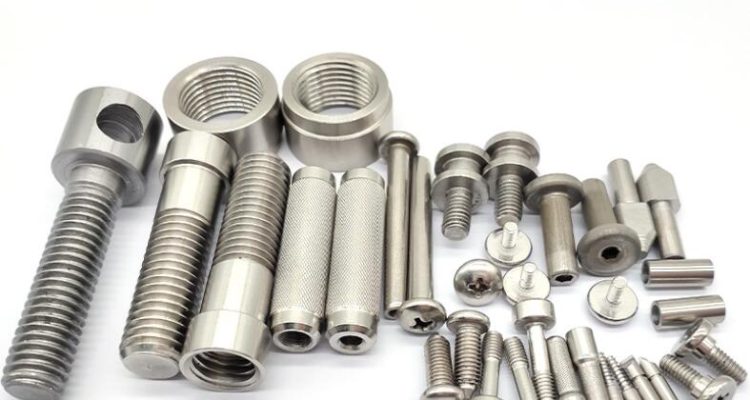
5 Tips For Identifying Nut And Bolt Markings
Learn to read symbols for strength, material type, and manufacturer info on nuts and bolts. Each marking, like radial lines or numbers, indicates specific standards and durability measures.
Marking Symbols
Many industries rely on understanding the meaning of the different marking symbols that may be found on nuts and bolts. In construction and manufacturing, in particular, using the correct hardware is directly related to the safety and integrity of mechanical assemblies. This guide seeks to interpret the markings found on bolts correctly.
Material and Grade
Every nut and bolt is stamped to indicate its material and grade. For example, no metal fasteners are aluminum; if you find a bolt that says “304,” it is made of 304 stainless steel, which contains 18% chromium and 8% nickel. Stainless steel is highly corrosion-resistant and strong. Such screws can be used outdoors and in particularly corrosive environments. Similarly, other materials and their applications can be deduced based on the marking.
Number Codes
Bolts frequently contain critical mechanical property information in number form. The class of bolts in metric fasteners also indicates the diagonal distance across the bolt’s head. For example, the numbers “8.8” and “10.9” are commonly found on metric bolts. The 8.8 indicates the tension strength is a minimum of 80 megapascals, while the ratio of the yield strength to the tensile strength is 90%. This means that 10.9 bolts possess 1000 MPa tensile strength and 900 MPa yield strength, and so on.
Metric vs. SAE
Understanding the difference between a metric and SAE marking ensures compatibility and mechanical performance. SAE symbols are not numbers but are radial lines. For instance, a Grade 5 bolt is a tempered, quenched, medium carbon steel with three radial lines. Metric bolts use numbers, as mentioned earlier. Care should be taken to use the right system and to do regular checks of existing bolts. Any bolt that does not match the other bolts in its vicinity in a critical dimension should be replaced. For example, if a bolt marked as Grade 2 is found where only Grade 5 is to be tolerated, it must be replaced immediately. Regular audits and understanding the different markings used can do wonders for the safety and longevity of equipment.

Hebei Chengzhi Fastner Co., Ltd._Screws_Bolts_Anchors
Numeric Code
Identification of the numeric code on nuts and bolts is a necessary skill for anyone working in the engineering, automotive, and construction spheres. This numeric code gives detailed information about the mechanical characteristics of the fastener, which is necessary to ensure that the right hardware is used for a particular application. This paper discusses this knowledge, its meaning, and possible applications.
Understanding Numeric Markings
The marking on these fasteners usually consists of two digits when it is a metric bolt . For example, the marking of 8.8 or 10.9 on the bolt head gives the information important to anyone who is going to use this bolt. The first number gives the tensile strength of the bolt in hundreds of MPas. Therefore, an 8.8 bolt has a minimum tensile strength of 800 MPa. The second number (the 8 in 8.8) tells us that the yield strength is 80% of the tensile strength. So, these two figures are extremely important for an engineer who is going to select the hardware that will successfully bear the specified load.
Code Of Practice
It is important to be aware of this code in practice because, depending on the task and the grade of the material, a 4.6, 8.8, 10.9, or 12.9 fastener must be used in some structures or equipment assemblies. For example, in some critical structures, where loads are extremely high and mechanical stresses are maximal, the use of the 4.6-grade bolt can result in a failure of the mechanical system. There are examples of similar disasters in bridge constructions or machinery assembly lines due to the use of a bolt with an inadequate grade, which explains the critical importance of this knowledge in the practice of fastener selection.
Cross-Referencing Standards
It is also very important to understand which code corresponds to which standard because this information will depend on the steel’s corresponding charact eristics. For example, the A325 standard is as close to the requirements for the 8.8 bolt as possible, but it has additional information about bolt diameters and length standards. So, these two numbers are critical knowledge for anyone working in engineering, construction, or even vehicle repair and construction. In addition, it is also important to be able to compare this grade with various standards, such as the ASTM or ISO, because the differences can be significant.
Global Standards and Compliance
In the modern world, the knowledge of these numerical codes is especially important because different countries have their systems of grading. For example, a worker in Russia would use the GOST standard, which in reality fully copies the ISO, but steel grades have their names requiring additional work and its equivalence to the American system. Of course, the situation is even more complex for manufacturing companies working globally because a technician specializing in the area of the SAE standard in the U.S. can now be working somewhere else. So, the level of knowledge and training must be high enough to ensure compliance with different international safety and performance standards.
Material and Grade
To ensure that the right hardware is used in construction, manufacturing, or automotive applications, proper material and grade markings on nuts and bolts must be identified. This knowledge helps ensure that the particular hardware can withstand expected environmental conditions and mechanical stresses.
Meaning of Key Markings
incorporates key principles to improve the marketing of products and services. In terms of identifying the material and grade on a bolt or nut – such as 304, 316L, or A4 – these markings describe the type of stainless steel used. If, for instance, the marking is “316” on the bolt, this means that the material is 316 stainless steel, a type that is excellent in corrosion resistance thanks to the higher nickel content and the addition of molybdenum. Marine environments, for example, have the presence of saltwater, meaning that “316” stainless steel is a good choice when using fasteners in such applications.
Compliance and Standards
It is important to ensure that a particular bolt or nut meets specifications or standards as dictated by ASTM or ISO, for instance. For examples, a bolt that meets the ASTM A307 grade A is considered to be made from low-carbon steel and is suitable in general applications. An example of a bolt that meets ASTM A193 grade B8M is one that is made of 316 stainless steel and is intended for AP or HP applications. Professionals must ensure that these standards and grades agree with the application’s requirements to guarantee safety and performance.
Real-World Application
In the real world, selecting the right material and grade can increase a structure’s safety and longevity. For example, 304-grade stainless steel might be used on the bolts in buildings away from sea levels, but these fasteners will be at risk of corrosion from the salt in the air. Comparatively, 316-grade bolts might be used on a building near the sea because these fasteners are resilient enough not to corrode or risk structural disintegration. The decisions behind choosing the right material are based on the hardware’s marketing technology as used to educate and inform people and other professionals. In high-rise buildings, bridges, and power plants, these principles apply perfectly, especially where the right grade must be used to prevent fatal injuries or property damage.
Metric Vs Imperial Markings
Understanding the differences between metric and imperial bolt markings is critical for any professional working in assembly, construction, or maintenance of any machinery. This distinction makes the difference when it comes to ensuring compatibility and proper mechanical properties in multiple engineering applications. Overall, with the help of this conceptual difference, a professional can derive multiple important practical implications.
How to Identify Metric Markings
They are assigned with numbers that indicate their strengths. The markings may vary between 8.8, 10.9, 12.9, and other values, and these numbers represent the bolt’s tensile and yield strength. For instance, a bolt marked as 8.8, has a tensile strength of 800 MPa, and yield strength of 640 MPa. This number is critical to any engineer and technician due to the necessity to evaluate whether the bolt in question can handle a certain load.
How to Recognize Imperial Markings
Imperial markings vary between grades like 2, 5, or 8. The latter is associated with high tensile strength and goes with six radial lines on its head. Grade 8 bolt is widely used in cases where the bolt is exposed to severe forces and tension, such as in automotive suspension and industrial machinery. Overall, understanding how these two systems differ from each other is critical for a professional since it can also be applied in everyday practices.
Theoretical Comparison in Applications
In actual applications, the choice may heavily depend on the regional standards and the background of the machinery already being repaired. Therefore, in the case of the United States, professionals largely deal with imperial measurements regarding the bolts in question. At the same time, any engineering project in Europe will most likely use a metric measuring system. Inergiation of these two different systems can present multiple compatibility problems for any given professional.
The Discrepancy Example
One common example would be the automotive industry, where old American car applications rely on imperial measurements. However, a modern vehicle brand is likely to use metric bolts, which implies that the mechanic must understand the difference and appropriately convert it.

Cold Forge Fasteners And Forging
Maintenance and Security
The service and the security of mechanical systems require correct identification and use of nuts and bolts. This knowledge is essential for keeping the various industries’ machines running for prolonged periods. For instance, one of the maintenance practices, which can be identified and elaborated upon, is a routine inspection. The technicians look at the marking on the bolts and verify that it is the bolt’s correct specification for the application. A typical marking for a bolt with a requirement to withstand a corroding environment in an industrial setting would be ‘A4-70’, denoting that it is a 316 grade stainless steel fastener with a 700MPa. Without the correct marking, using the bolt might compromise the service’s structural integrity, making the machinery prone to failure.
Safety Requirements
One of the main reasons for using the appropriate bolt grade and materials is the safety of the installation. The low-grade weak bolts can snap, break, or deform under high pressure or pressure change, leading to failures. For instance, when constructing a suspension bridge, using the correct bolts is necessary, so the bridge can handle both the standard operational load and environmental factors like wind or vibration. It is important for the maintenance personnel to be trained in the identification of the nuts and bolts markings to ensure the security of operations. A poorly graded technician may delay or even miss the replacement of potential or functional failure fasteners upon routine inspection.
Transfer of Training Knowledge
To train the personnel in bolt and nut marking identification, the superficial codes can be learned. The American and International standardization systems of markings such as ASTM or ISO are often used. The routine inspection must be followed by a standardized log or report noting all fasteners’ replacement or rejected bolts. All such installations and maintenance activities must be documented in the case of audits, inspections, or inquiries.



